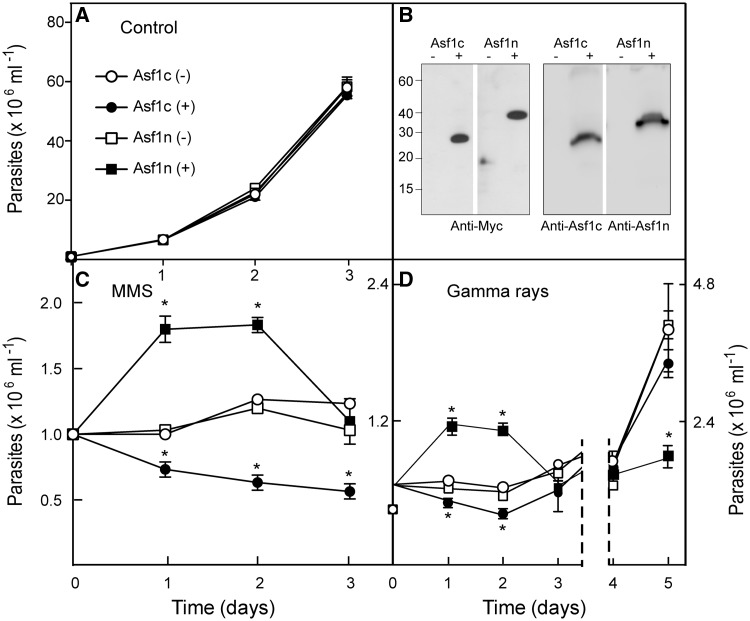Figure 7.
Overexpression of nuclear Asf1, but not cytosolic Asf1, promotes growth but impairs recovery after DNA damage. Procyclics transfected with plasmids coding for an inducible system to overexpress Asf1c (circles) or Asf1n (squares) were incubated with (dark symbols) or without Tet (empty symbols) for 24 h. (A) The cells were grown without DNA damaging (control). (B) Overexpression of induced proteins were monitored by western blot with anti-Myc (left panels), anti-Asf1c or anti-Asf1n antibodies (right panels) in non-induced (−) or induced (+) cells. The cells were incubated with 0.001% MMS (C) or subjected to γ-irradiation (40 Gy) (D) maintained in the presence or absence of Tet and counted daily. The numbers are mean cell concentrations ± standard deviation of three independent experiments. Asterisk indicates significant differences between induced and non-induced parasites, calculated by Student’s t-test (P < 0.05). We could not detect the 6×Myc-tagged at the endogenous locus by western blot, although it was clearly observed by immunofluorescence analysis. Nevertheless, both Asf1 proteins endogenously tagged with 12×Myc were detected by western blot.

